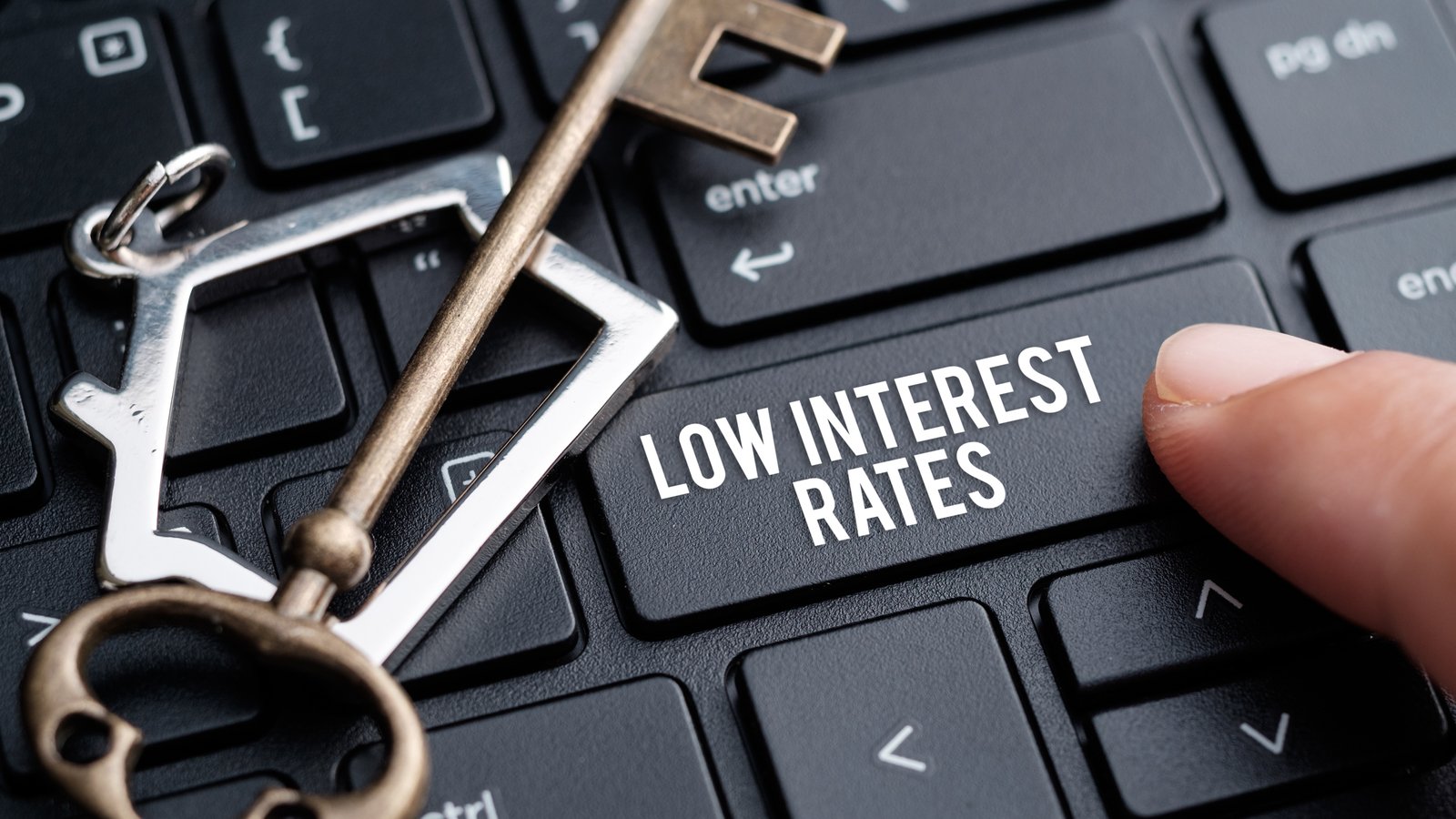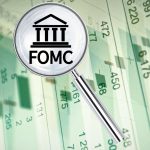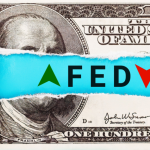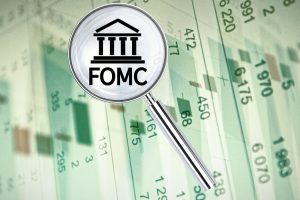
The Fed throws cold water on near-term rate cuts … but the market jumps higher (at least, initially) … why the last mile of inflation will be the hardest … too much money chasing too few goods
Today, as was widely expected, the Federal Reserve held interest rates unchanged at the target level of 5.25% – 5.50%.
No one expected this to be a high-drama meeting. Given recent economic reports that have shown reinflation (or at least a flatlining in the progress on deflation), the odds of a rate cut were, effectively, zero.
The bigger questions were “would Federal Reserve Chairman Jerome Powell lean toward sounding dovish or hawkish in his live press conference? And what would that tone imply for rate cuts later this year?”
I wanted to run an experiment. While I usually watch the market in concert with listening to Powell in his live press conference, I decided to listen without any market watching. I would then guess what the market’s reaction would be.
As I listened, I zeroed in on Powell largely backtracking about cutting rates at all in 2024. Supporting this were comments such as:
- Gaining enough confidence about inflation falling enough to warrant rate cuts will take longer than expected
- Powell doesn’t know exactly when the Fed will gain confidence to cut rates
- Powell believes inflation will fall, but he’s not as confident as he was before
- Powell isn’t sure that inflation will decline enough to cut rates this year.
Given this, I wondered to what extent the markets would be a sea of red, pouting about this death knell to the “multiple rate-cut” narrative from earlier this year.
How wrong I was.
When I looked at the market, I found it soaring. All three indexes were up more than 1%.
Here’s a headline from CNBC explaining why:
Dow jumps 500 points as Powell says the Fed’s next move is unlikely to be a hike
Huh? When did that become the line in the sand?
Early in Powell’s press conference, in response to a question about a rate hike, Powell said:
I think it’s unlikely that the next policy rate move will be a hike. I’d say it’s unlikely.
I remember listening, thinking “Well, that’s good. At least we can mark that off the list of things to worry about.” But I didn’t think it was a huge revelation.
Apparently, Wall Street did, and the market exploded higher.
To me, this reflects just how panicked Wall Street has become about a resurgence in inflation. It also shows how much bulls wanted to find a reason to push prices higher after weeks of sideways/down market action.
But that wasn’t the whole story…
Within about 30 minutes of those highs, the market reversed – I assume because some traders still remember yesterday’s goalposts.
Those 1%+ gains fell off a cliff and both the S&P and the Nasdaq ended the day negative, and the Dow ended only slightly positive.
Here’s a 1-minute chart of the Nasdaq’s rollercoaster ride.

It will be fascinating to watch how Wall Street processes today’s news over the rest of this week. This afternoon’s schizophrenic reaction suggests there’s tremendous emotion in this market – and that often suggests one thing: brace for volatility, though the direction of that volatility is unclear.
For the rest of today’s Digest, let’s step back to get a 30,000-foot view of where we are with inflation
We’ve come a long way in the fight against inflation since it topped out at 9.1% in June 2022. March’s headline CPI came in at 3.5% year-over year.
While that’s fantastic progress, getting from 3.5% to the Fed’s target rate of 2% (the “last mile” as some call it) is likely to be more challenging than many bulls want to believe.
To help illustrate why, let’s begin by rewinding to this description of inflation from President Ronald Reagan back in the 1980s:
Government has only two ways of getting money other than raising taxes: It can go into the money market and borrow, competing with its own citizens and driving up interest rates, which it has done. Or it can print money. And it’s done that. Both methods are inflationary.
We’re victims of language. The very word “inflation” leaves us to think of it as just high prices. Then, of course, we resent the person who puts on the price tags, forgetting that he or she is also a victim of inflation.
Inflation is not just high prices. It’s a reduction in the value of our money. When the money supply is increased but the goods and services available for buying are not, we have too much money chasing too few goods.
“Too much money chasing too few goods.”
Let’s get a visual of this to help understand why this last mile might be tough to complete.
We’re about to look at M3 money supply. To Reagan’s point about inflation being a reduction in the value of our money, notice how Investopedia defines M3 money supply below (bold added):
The M3 classification is the broadest measure of an economy’s money supply. It emphasizes money as a store of value more so than as a medium of exchange, hence the inclusion of less-liquid assets in M3.
Less liquid assets would include those that are not easily convertible to cash and therefore not ready to use if needed right away.
Here’s our nation’s M3 money supply since 1965. Do you happen to see “too much money” kicking in anywhere?

Today, our M3 money supply remains roughly 36% higher than it was just before the pandemic.
And for anyone who might object to using M3, viewing it as too wide a category, below is a chart of M1 money supply. For anyone less familiar, M1 is the sum of all currency in circulation, plus the value of most liquid deposits at commercial banks.
Again, the chart below begins in the 1960s.
Enjoy.

As you can see, the bloated money supply presents a challenge to inflation going away quietly.
But what about the Fed and its efforts to remove excess liquidity from the economy through Quantitative Tightening?
One way that our government tries to siphon excess money out of our economy is through its activity in the treasuries market.
Here’s Barron’s to help explain how it works and tell us what the Fed has been doing recently:
Large-scale purchases of assets [from the Fed]—called quantitative easing—add cash to the system, making borrowing cheaper. The opposite is called quantitative tightening, or QT.
The Fed has been engaged in QT since June 2022, allowing $60 billion in Treasuries and $35 billion in mortgage-backed securities to mature monthly without reinvesting the proceeds—pulling cash out of the financial system…
The Fed’s balance sheet has declined from nearly $9 trillion at its 2022 peak…to about $7.4 trillion last week.
Today, Powell announced that the Fed will slow the reduction of its balance sheet. Specifically, the monthly cap on Treasurys will fall to $25 billion from $60 billion, while the mortgage roll-off will remain unchanged at $25 billion a month.
Stepping back, with the Fed’s balance sheet declining from nearly $9 trillion to about $7.4 trillion, that’s good, right? That’s a lot of money drained from the economy?
Well, before we arrive at that conclusion, let’s add a bit more context.
The appropriate analysis here isn’t how much lower this value is relative to its peak, but rather, how much higher it remains relative to its beginning – before we woke the sleeping beast of inflation.
As you can see below that analysis is not encouraging.

Even after factoring in the effect of its QT initiative, the Fed’s contribution to “cash in the system,” as Barron’s just put it, remains roughly 80% higher than pre-COVID levels.
And today, Powell announced the Fed will be slowing the speed of this reduction.
Again, this is a challenge for our continued progress on inflation.
One reason why the Fed might cut corners on its inflation target and declare a win sooner than expected
Let’s assume that inflation stalls out at today’s level. There’s a difference between CPI and PCE inflation readings, so let’s just call inflation “3%” to make it easy.
If the Fed sticks to its guns and tries to lower inflation from 3% to 2% by holding rates unchanged – possibly for the rest of the year – it’s not just you and me that will feel the pinch…
Our government is getting absolutely jackhammered by today’s fed funds rate.
Thanks to the combination of its mindboggling spending over the last few years and today’s elevated fed funds rate, the interest payments on our national debt have gone vertical.
See for yourself. The chart below dates to the 1960s. I’ve circled what’s happened in the wake of the pandemic.

To help contextualize this, let’s revisit our March 28th Digest:
These interest payments are becoming one of the largest line items of our national budget.
As recently as the mid-2010s, the cost to service our nation’s debt was 1.2% of our GDP.
Last year, it was double that at 2.4% of GDP. This year, it’s projected to explode to 3.1%.
For even more context, the Congressional Budget Office projects that federal spending on interest payments will top $870 billion this year. That’s more than our nation will spend on its defense budget ($822 billion).
I’d be surprised if this isn’t a talking point during the presidential election.
Now, the impact of this stratospheric debt service isn’t likely to be a “guillotine chop” of financial carnage anytime soon. It will be more of a slow boil which, frankly, has already begun.
On that note, here’s the Peter G. Peterson Foundation, which is a non-partisan thinktank:
Rising interest rates and growing national debt cause federal interest costs to rise. And interest costs, in turn, contribute to the growth of federal spending — continuing a vicious cycle of borrowing, interest, and higher debt.
Interest costs also crowd out opportunities for investment in other important priorities. In fact, the government is already on a path to spending more on interest costs than its spending on education, research and development, and infrastructure combined.
If unaddressed, the growing borrowing costs will pose significant challenges for our nation’s fiscal future.
Keep in mind, even if inflation goes to zero, we’ll still be living in a new economic reality of higher prices
We’ve covered this issue several times here in the Digest. Inflation, which just measures the difference between prices, can fall to zero, and yet the absolute value of those prices can remain elevated, chipping away at your wallet.
Here’s how we put it in our April 10th Digest:
For many goods and services, the trillions of dollars of helicopter money from the federal government that flooded the economy during the Covid pandemic resulted in a one-time “price reset” that bumped baseline prices substantially higher.
So, even if inflation drops to 2%, the new baseline price tag for many goods/services won’t ever return to where it was.
To what extent is the budget of the average American prepared for this new normal in perpetuity?
Meanwhile, if inflation doesn’t go away, yet our economic productivity stumbles due to snowballing debt and pinched wallets, then we have an even bigger problem…
In that case, we face the dreaded “S” word…
Stagflation.
When asked about stagflation in his press conference, Powell did his best to shut down the argument quickly:
I don’t really understand where that’s coming from.
After highlighting some measures of economic growth at 3% and inflation below 3%, he concluded:
I don’t see the ‘stag’ or the ‘-flation.
Since we’re running long in this Digest, we won’t argue the other side of this today. For now, we’ll just say that in a stagflation environment, we want hard assets like real estate and commodities.
Your best bet with stocks will be high-quality companies with strong earnings that have pricing power to help protect their margins and profits. Even better if they offer healthy dividend yields.
But we’re getting ahead of ourselves. Let’s hope the specter of stagflation passes as earnings remain robust, disinflation returns, and the Fed does, in fact, cut rates later this year.
However, based on President Reagan’s description of “too much money chasing too few goods,” along with the money supply charts from earlier, our skepticism lingers.
Have a good evening,
Jeff Remsburg







